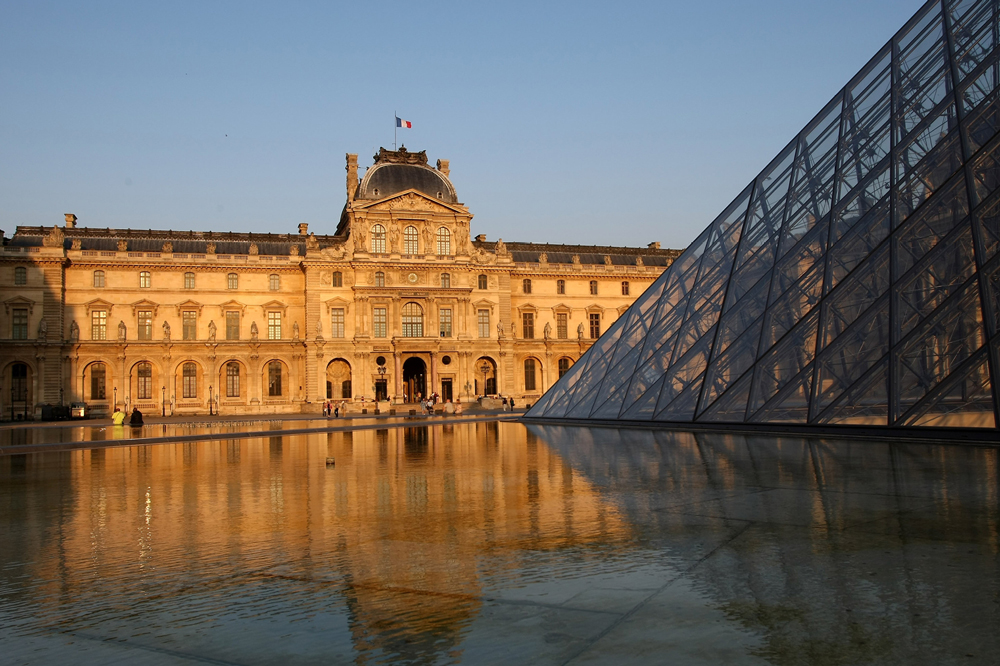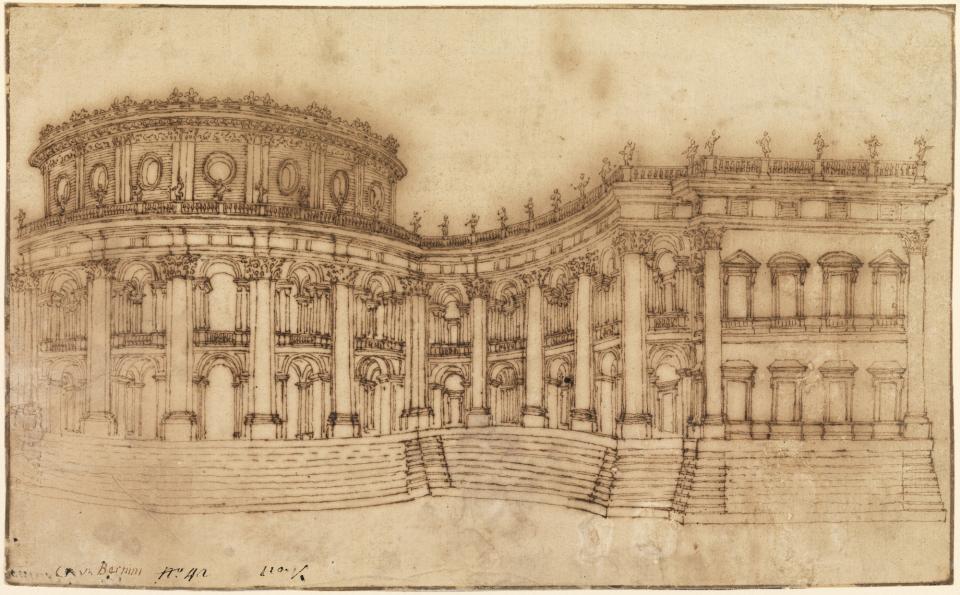The Italian architect Bernini submitted a series of designs for the Louvre’s East wing in 1665. How would Paris look today if Louis XIV had commissioned him instead of turning his attention to Versailles?
Paris: all the great monarchs and statesmen of France have left their mark on the capital. In March 1989, President François Mitterand inaugurated I.M. Pei’s pyramid at the Louvre, then proclaimed the world’s largest museum. With his characteristic self-confidence, Mitterand shook off all mockery and harsh criticism: today, we find it nearly impossible to imagine the building without its transparent and perfectly proportioned gateway. The history of Paris’ architecture was always one of ambition and boldness. Nonetheless, the city’s overall appearance is firmly wedded to the uniform grid of classical vocabulary, which has been perpetuated and re-perpetuated over the centuries by Mansart, Gabriel, Blondel, Garnier and others. The capital, however, could have looked completely different.
By the time Louis XIV came to the throne, aged five, in 1643, the Louvre had long served as the headquarters of the French monarchy. It was an architectural hotchpotch to which almost every king had made additions since the Middle Ages. Louis’ grandfather, Henry IV, had devised a scheme by which to turn the Louvre into a vast and symmetrically aligned royal residence, similar to Inigo Jones’s ambitious and never-completed plans for Whitehall Palace. Of the so-called Grand Dessein only the Grande Galerie was actually erected. Built along the Seine, it was later to house Louis XIV’s most successful artists, craftsmen and scientists, and now houses the museum’s collection of Italian Renaissance paintings.
In 1665, the Sun King summoned the notorious Roman architect Gianlorenzo Bernini to France in order for him to design a new East façade for the Louvre. The episode of Bernini’s visit holds a special place in art history, not least because it is an entertaining one, complete with gossip, scandals and national stereotypes. The Cavaliere’s unpredictable ways and his repeated ridicule of French artists apparently led the entire art establishment to sigh with relief when at last he left. Altogether, Bernini delivered four different designs for the Louvre, none of which were accepted. The most striking one was the first, which Christopher Wren (who was sojourning in Paris at the same time) famously ‘would have given [his] skin for’. It invites an amusing yet not unreasonable speculation: what would Paris look like today had Bernini’s first design materialised?
The French capital, renowned for its grand avenues cut through the city in the mid 19th century by Napoleon III and Baron Haussmann, would have a very different face. After all, the vast buildings lining these avenues were all designed to reflect the great tradition of 17th-century French architecture, embodied by Versailles. Had Bernini built the Louvre, Versailles may never have received Louis XIV’s almost undivided attention. French courtiers, emulating the king’s taste as they did, would have built their town houses in the Italian style, gradually turning Paris into a second Rome. Moreover, the idea of transplanting the centre of power from the city to the outskirts might never have caught on, which in turn could have had an international impact: without Versailles, would there be a Schönbrunn outside Vienna, a Peterhof outside St Petersburg, or a Drottningholm outside Stockholm?
Frontispiece for Jean-Baptiste Colbert de Seignelay (1668), François de Poilly after Charles Le Brun

Pei’s idea for a pyramid in front of the Louvre was also not an entirely new one. Both Bernini and Louis XIV’s principal painter Charles Le Brun had supplied designs for pyramids to be erected as frontispieces to the palace. These were in fact hybrids of pyramids and obelisks (both terms were loosely used as synonyms at the time), and while none of Bernini’s original sketches for his project appear to survive, the lower section of Le Brun’s design is known through a 1668 print. Given the numerous similarities, it appears highly likely that Le Brun conceived it in response to Bernini’s Fountain of the Four Rivers on Piazza Navona in Rome. His project was therefore intended not only to convey France’s supremacy over contemporary Italian architecture, but maybe also to provoke a direct comparison between the Cavaliere and himself.
Some art historians argue that Bernini’s visit to Paris had been staged precisely in order to trigger Louis XIV’s architectural independence from Rome. Whether or not this is true, we cannot establish with certainty. In slightly exaggerated terms, however, one might characterise this significant artistic episode in France as one of a country and king at the crossroad between Baroque and Classicism. Louis XIV went down one path – had he chosen the other, Paris might not be the city we know today.
Wolf Burchard is a specialist on 17th- and 18th-century patronage. His online series about the legacy of Louis XIV expands on his feature article ‘Blinded by the Sun’ (first published in Apollo; March 2015).




